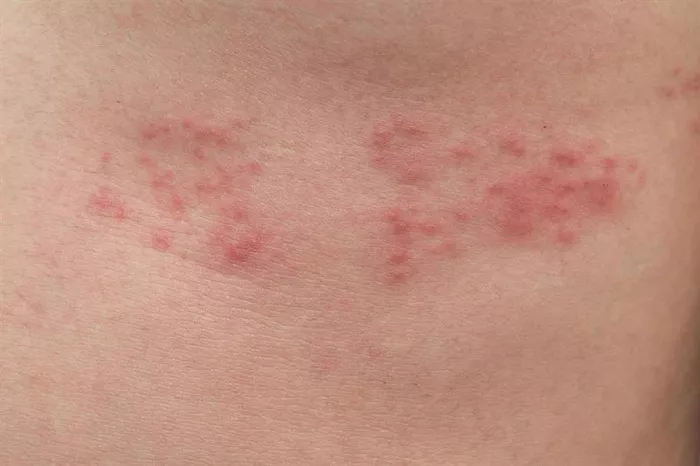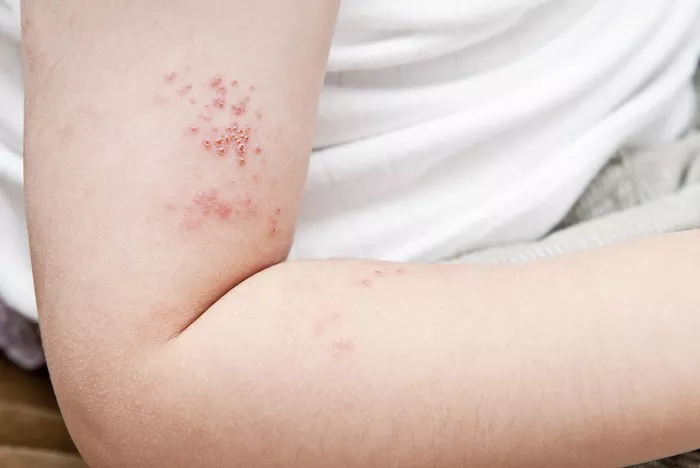Shingles, also known as herpes zoster, is a viral infection that causes a painful rash. It usually appears on one side of the body, often in a band-like pattern. The rash follows the path of a nerve, which is why it often appears on the back, chest, or abdomen. If you are wondering what shingles looks like on the back, this article will walk you through the common signs, symptoms, and appearance of the rash.
What Is Shingles?
Shingles is caused by the varicella-zoster virus, the same virus responsible for chickenpox. After someone has chickenpox, the virus remains dormant in their body and can reactivate later in life, causing shingles. The virus affects the nerve roots and causes a rash, which typically appears on one side of the body.
The infection can occur in anyone who has had chickenpox, but it is most common in people over 50 or those with weakened immune systems. Stress, certain medications, and other factors can trigger the reactivation of the virus.
Initial Symptoms of Shingles
Before the rash appears, shingles often starts with symptoms like:
Pain or burning: This is usually the first sign of shingles. It may feel like a burning sensation or a deep, aching pain along the nerve path.
Tingling or itching: Some people feel tingling, itching, or numbness on the skin where the rash will eventually appear.
Sensitivity to touch: The skin in the affected area may become very sensitive. Even light contact can feel painful.
These early symptoms can last anywhere from one to five days before the rash appears. It is important to recognize these signs early so that you can seek treatment to reduce the severity of the infection.
What Does the Shingles Rash Look Like on the Back?
When shingles appears on the back, the rash will usually start in a small, localized area. Here is a step-by-step guide to how the rash typically develops:
Red or Pink Patches
The first sign of the shingles rash is often red or pink patches on the skin. These areas are usually flat and may feel slightly raised. They appear where the virus has reactivated in the nerve roots. On the back, this rash usually starts on one side and can cover a small strip or band-like area along the spine or rib cage. The rash often follows a line or curve along the body, tracing the path of a nerve.
Blisters
After one to two days, the red or pink patches will begin to form fluid-filled blisters. These blisters are small, raised, and can be very painful. The blisters are typically grouped together in clusters and may look like a string of pearls. As the blisters continue to develop, they may merge together into larger blisters, making the rash appear more pronounced.
Oozing and Crusting
The blisters will eventually burst open, leaking clear fluid. This stage of shingles can be messy, as the fluid inside the blisters may ooze out. After the blisters have burst, they will begin to dry out and form crusts. The crusting usually starts around seven to ten days after the rash first appears. The scabs may be yellow or brownish in color, and they will gradually fall off as the skin heals.
Scarring
Once the blisters have healed and the crusts fall off, some people may be left with slight scars or marks where the rash was. These scars are usually temporary and fade over time. However, in some cases, the scarring can be permanent, especially if the rash was severe.
Painful Nerve Symptoms
Even after the rash has healed, people with shingles often experience lingering pain, known as postherpetic neuralgia. This can last for months or even years after the rash has disappeared. The pain may be a burning, sharp, or aching sensation that continues in the area where the shingles rash occurred.
Where Does Shingles Appear on the Back?
Shingles on the back typically appears on one side of the body, often following the path of a specific nerve. This means that the rash usually develops in a narrow, band-like area. The back is a common location for shingles because it contains several major nerve roots. These are the nerves that can become affected when the varicella-zoster virus reactivates.
Along the Spine: The rash often appears in a band that runs along one side of the spine. This can cause the rash to wrap around the body from the back to the front of the chest or abdomen.
Between the Shoulder Blades: Shingles can also appear between the shoulder blades. This area is common for shingles because of the nerve distribution in the upper back.
Lower Back: In some cases, shingles can appear in the lower back, near the waist or hips. The rash may cover a larger area here, depending on the nerves involved.
Shingles rarely affects both sides of the back at once. It almost always appears on just one side of the body, though it can spread to other areas over time. The rash will often follow the specific path of the nerve affected by the virus.
Shingles and the Risk of Spreading
While shingles itself cannot be spread from one person to another, the varicella-zoster virus can be spread to someone who has never had chickenpox or the chickenpox vaccine. This can occur if a person with shingles has direct contact with someone’s open blisters. The virus can then cause chickenpox in the unvaccinated person, not shingles.
To reduce the risk of spreading the virus, it is important to keep the rash covered, avoid scratching the blisters, and wash your hands regularly. You should also avoid contact with pregnant women, newborns, and people with weakened immune systems until the rash has scabbed over.
How to Treat Shingles on the Back
While there is no cure for shingles, early treatment can help reduce the severity of symptoms and shorten the duration of the illness. If you suspect you have shingles, it’s important to see a doctor as soon as possible. Treatment typically includes:
Antiviral medications: These help reduce the severity and duration of the outbreak. Common antiviral drugs for shingles include acyclovir, valacyclovir, and famciclovir.
Pain relievers: Over-the-counter pain medications like acetaminophen or ibuprofen can help manage pain. In more severe cases, prescription pain medications or nerve pain medications like gabapentin may be necessary.
Topical creams: Calamine lotion or lidocaine patches can help relieve itching and pain. Cool compresses can also soothe the affected area.
Corticosteroids: In some cases, doctors may prescribe steroids to reduce inflammation and pain, though this is not always necessary.
The sooner you begin treatment, the better your chances of preventing complications like postherpetic neuralgia, which can be a long-lasting issue after shingles.
Preventing Shingles
There is a vaccine available that can help prevent shingles, called the Shingrix vaccine. It is recommended for adults aged 50 and older, as well as people with weakened immune systems. The vaccine is highly effective at reducing the risk of developing shingles and can also reduce the severity of the disease if it occurs.
If you have had shingles before, you can still get it again, but the risk is lower. The Shingrix vaccine is also recommended for people who have previously had shingles to prevent recurrence.
Conclusion
Shingles on the back can be a painful and uncomfortable condition. The rash typically appears in a band-like pattern along one side of the body, following the path of a nerve. It starts as red patches, develops into blisters, and eventually forms crusts. Although the rash can be alarming, early treatment with antiviral medications and pain management can help reduce the severity of the illness. If you notice any symptoms of shingles, it is important to seek medical attention promptly.
Related topics:


























